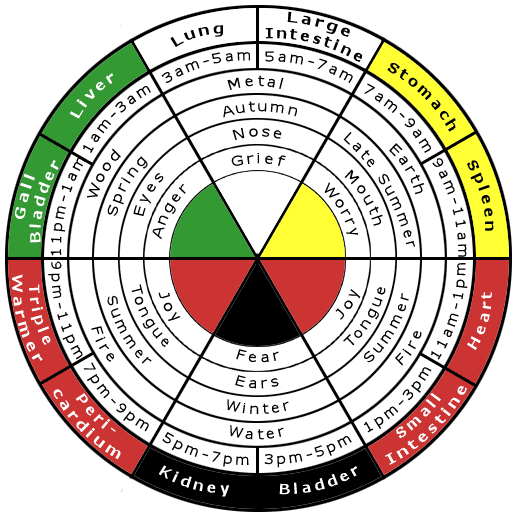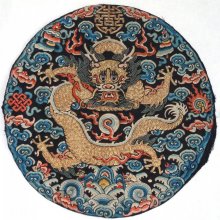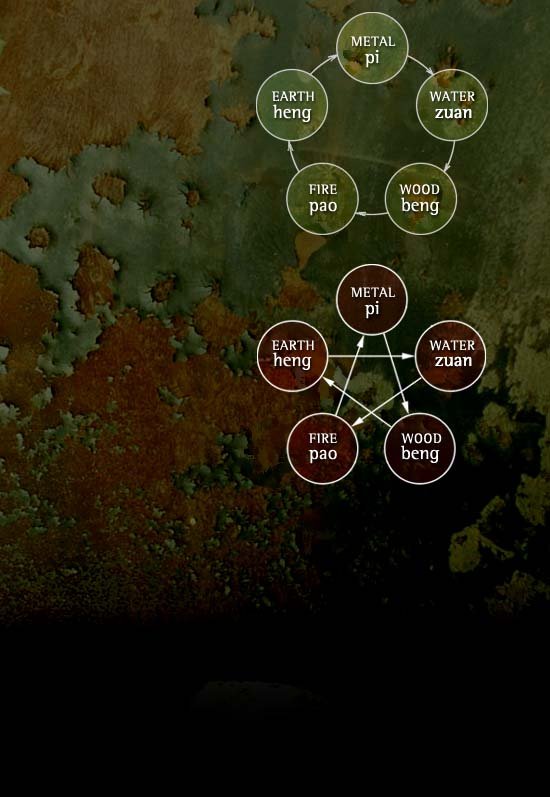Deep learning is transformative. To move from where you are to where you want to be requires a map, or at least a path. The problem with NeiJia is that, for the beginner, there is no understandable map and the path seems convoluted at best, unintelligible at worst. In UCB Program internal practice, From Standing to Pearls, the progression of capacity, skill and understanding is predictably linear and seems, on the surface, perfectly reasonable. To train the 5 Elements is to break with this surface rationality and embrace the unreasonable. When you are on the other side of the transformation, what was unreasonable, is seen as perfectly mundane. 5 Elements Nei Gong begins with Pearls and ends as students transition from Bones to Emptiness. Bone training reveals counter-intuitive internal relationships. These relationships, when clearly perceived, provide insight that unlocks understanding as to how deep stabilizing powers are refined and expressed. These stabilizing powers are first contacted safely in a health context. There is a great deal of internal strength required.
For this standing NeiGong, we must look closely at my criteria for success. This criteria is very specific. The eyes are soft. There is heat. When finished, living things posess a crispness, especially on the edges of the body against a background. The pattern of heat for the 5 Elements NeiGong follows each element. There is balanced pressure associated with the element currently active. Like all standing meditation in this method, simply notice the phenomena, do not strive for an effect. Striving should not be linked to Yi (intention).
After some time, students can begin applying this increased stabilizing capacity in a limited martial context as refined force or 'jin'. The point of contact becomes a passive sensor and uses 'ting jin' or listening energy to present the controlling element in response to incoming force. The Yi or mind-intent changes first and must be sharp and quick without rushing. Success is marked by very little apparent effort needed to support the point of contact relative to incoming force. Strong focus is required. This is a flavor of 'hua jin' or neutralizing force, which I consider to be an intermediate level skill. This is also the beginning of 'Offense and Defense are as One', although at this stage, there is little offense. Effortless offense relies on other capacities altogether. First of these is that the Yi must be clear and very light. If you strive to overcome the force, you will fail, as striving clouds the mind and instantly your foundation of stabilizing power is gone.
The internal capacities required are profound and, arising from the deep core stabilizing structure, are largely invisible. To feel the stabilizers there are deep and subtle cues. These cues first manifest as a specific kind of 'stretch against the bone' and awareness of where these stubtle stretches occur and in what order must be very clear. Muscular strength is fine and necessary, but application of strength comes after these fast 'invisible' changes. There is no 'strength' applied to engender these sensations, they are always present and unchanging. If you apply strength, this becomes a kind of striving and results in failure. I consider this phenomena to be a concrete exploration of the yi-qi-li process of change - emphasis almost exclusively on the change from yi to qi. Study of the 6 Harmonies is introduced at this time to provide needed concrete experiences that lead to a refined understanding of movement.
Keep in mind that the 5 Elements and their application must be trained in order to learn how to 'dissolve' incoming force. This takes years of specific development. This progression is different than simple refinement of beginner level internal changes. The 5 Elements forms a new foundation. It might help to see 5 Elements training to be an essential foundational platform and a transitional means to an end, not an end by itself. In short, 5 Elements NeiGong and their application to practice are tools for building the sensrory framework required for Separating Bones and Meat and further, apprehending Emptiness.
If you study XingYiQuan, you will find this an interesting addition to your understanding of JibenGong. In the 5 fists, the wrists change first, the waist is passive. The changes in the waist are hidden, not expressed overtly. If the waist changes first, it's not XingYi jibengong. Also, 5 fists, 5 distinctly different Jins. WuXing feeling. The 5 elements map directly to each fist through each organ set. If there's no 5 elements, no XingYi.
Success is counterintuitive and fits with the esoteric language of the Taoist Classics. All of the phenomena described in the diagrams below arise from this 'stretch against bone' sensation and, in my mind, provides proof that the training is authentic. Authentic, but not esoteric. This is an important difference. In my experience teaching, concepts like 'esoteric' make it impossible for students to allow the training to penetrate their everyday lives and, without an 'everyday' aspect, NeiJia methods fail. If you use the criteria below as outcomes or goals, you will 'strive' which, in my mind, is synonomous with 'fail'. Knowing the relationships between the fingers and the organs is not the result of training the fingers and organs. I've seen students with decades of hard work invested, only to find themselves sitting on the outside looking in. I aim to demystify and make clear a workable and repeatable path to genuine understanding.

|
The Generating Sequence (also known as Sheng cycle, generating cycle, creative cycle, nourishing cycle) Each Element generates another and each Element is generated by one.
The Mother and Son relationship applies to the generating sequence.
|
|
The Controlling Sequence (also known as Ko cycle, controlling cycle, restraining cycle) Each Element controls another Element and is controlled by one.
Put another way:
Another, another way: WOOD breaks EARTH |
|
The Overacting Sequence (also known as overacting cycle) When the balance maintained in the generating sequence is disrupted this causes an Element to become excessive and "overcontrol" another Element. |
|
The Insulting Sequence (also known as rebellious cycle, insulting cycle) This sequence operates in reverse to the controlling sequence, in that when the balance is broken between two elements the Element usually being controlled will Insult the controlling Element.
|
| Wood | Fire | Earth | Metal | Water | |
| Season | Spring | Summer | Late Summer | Autumn | Winter |
| Direction | East | South | Centre | West | North |
| Colour | Green | Red | Yellow | White | Black |
| Taste | Sour | Bitter | Sweet | Pungent | Salty |
| Yin Organ | Liver | Heart | Spleen | Lungs | Kidney |
| Yang Organ | Gall Bladder | Small Intestine | Stomach | Colon | Urinary Bladder |
| Sense Organ | Eyes | Tongue | Mouth | Nose | Ears |
| Tissues | Sinews | Vessels | Muscles | Skin | Bones |
| Sound | Shuu | Haa | Whoo | Tsss | Fuu |
| Finger | Index | Middle | Thumb | Ring | Pinky |

imperial dragon source: https://durhamweaver64.blogspot.com/2015/12/dragon-imagery-in-chinese-im...
From various sources, mostly Wikipedia. WuXing image by David DeVere
- Wuxing - https://en.m.wikipedia.org/wiki/Wuxing_(Chinese_philosophy)
- TianGan - https://en.m.wikipedia.org/wiki/Heavenly_Stems

